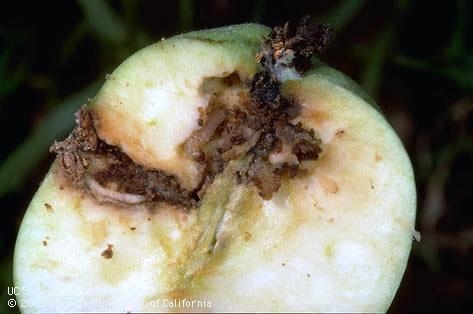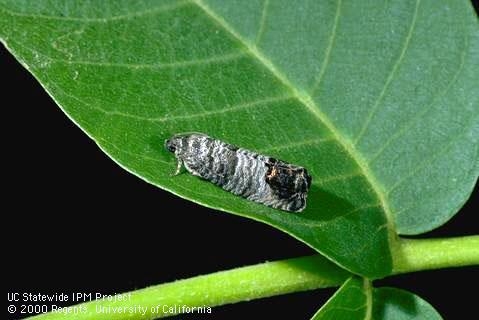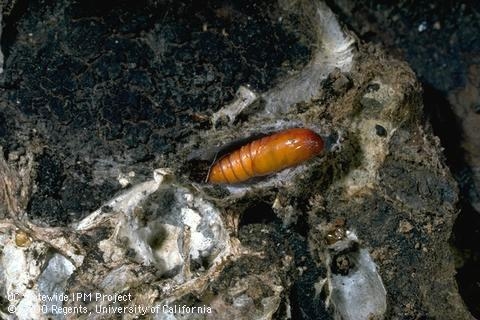Advice from the UC Master Gardener of Contra Costa Help Desk
Client's Question:

CCMG Help Desk's Response:
You most likey have codling moths. By the time you see the damage, typically at harvest, it is too late to protect that year's crop - your preventative tactics need to take place now, in the spring.


Traps:
Codling moth pheromone traps (sticky traps laced with pheromone) attract and capture the males. Fewer males make it more difficult for the females to mate. Hang traps starting in mid March (inland areas) to late March (coastal areas) when the emerging adults are expected to start flying. Use one or two per small tree and two to four per large tree and hang them high in the canopy. Codling moth pheromone traps are typically available at hardware stores, garden centers, or online.
Information on a home-made codling moth bait trap can also be found on UC MGCC Program's web site at http://ccmg.ucanr.edu/files/48135.pdf.
Sanitation:
Sanitation should be an integral and early part of any codling moth control program. Beginning about six to eight weeks after bloom, start checking fruit for sawdust-like filled holes (larvae entry holes in the fruit). Check every week or two and remove the infested fruit from the tree and the ground. Dispose of it in your yard waste, not your compost pile.
Sanitation and trapping may be all that is needed when you have an isolated tree and low codling moth populations. But, if populations have been allowed to build up over a number of years (or your neighbors haven't managed their trees) you may need a more aggressive approach to achieve satisfactory control (and maybe your neighbor's cooperation). For even more information on aggressive management of codling moths, including even more organic actions, go to the UC IPM Online--Statewide Integrated Pest Management website: http://www.ipm.ucdavis.edu/PMG/PESTNOTES/pn7412.html.
Good luck on "worm" free apples and pears this year..
Contra Costa Master Gardeners Help Desk
This Help Desk response was originally written by Emma Connery for publication in the Contra Costa Times in February 2010. It has been been updated for thie blog and any errors are the responsibility of the current HD blog editor.
Note: The Contra Costa Master Gardener Help Desk is available year-round to answer your gardening questions. Except for a few holidays, we're open every week, Monday through Thursday for walk-ins from 9:00 am to Noon at 75 Santa Barbara Road, 2d Floor, Pleasant Hill, CA 94523. We can also be reached via telephone: (925) 646-6586, email: ccmg@ucanr.edu, or on the web at http://ccmg.ucanr.edu/Ask_Us/